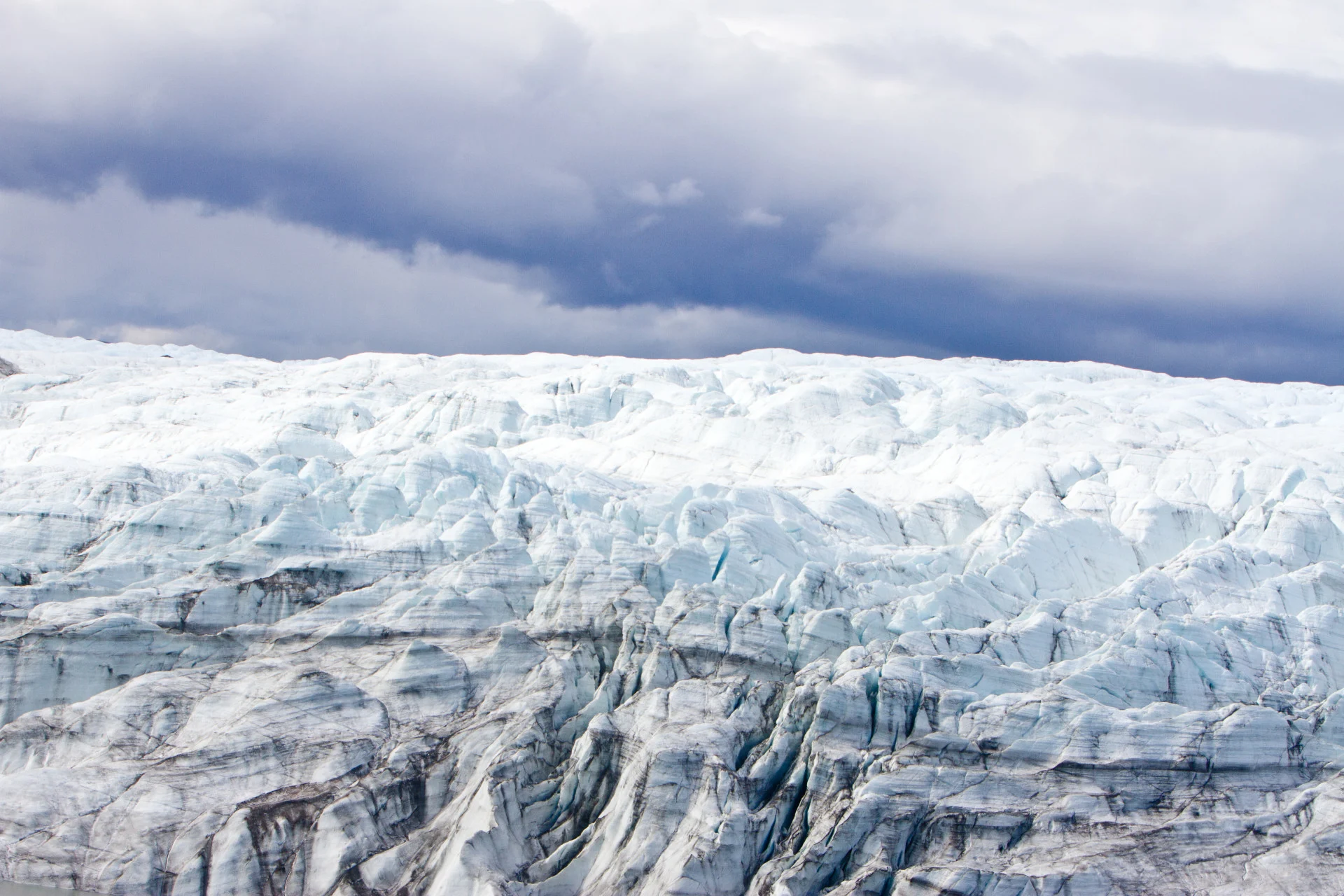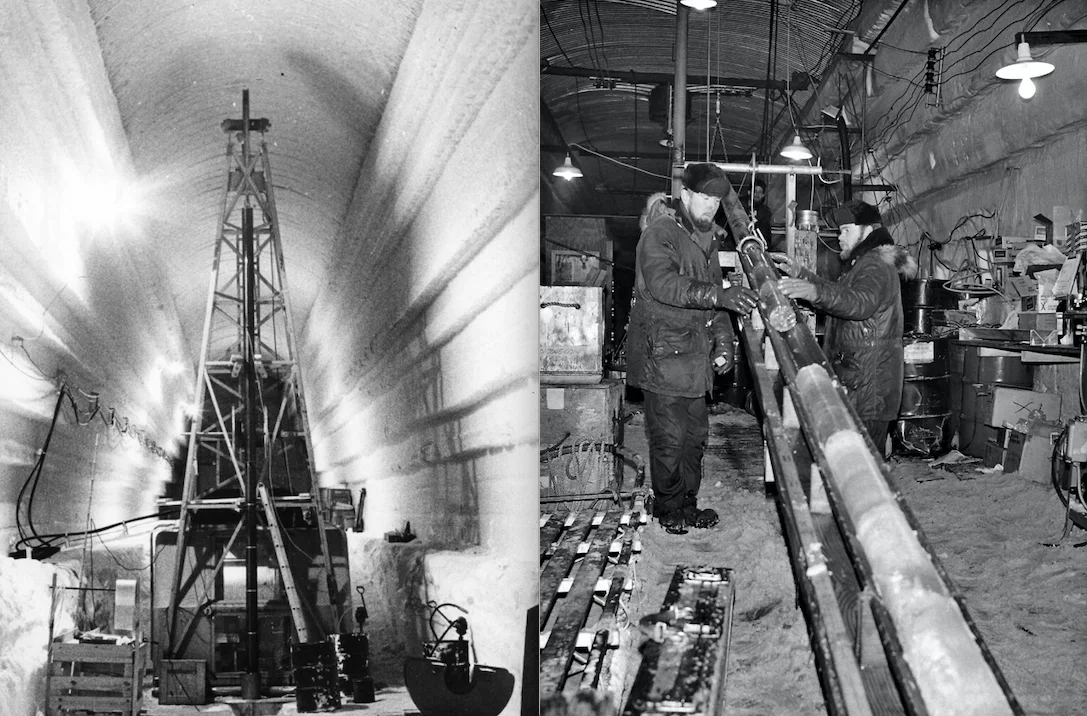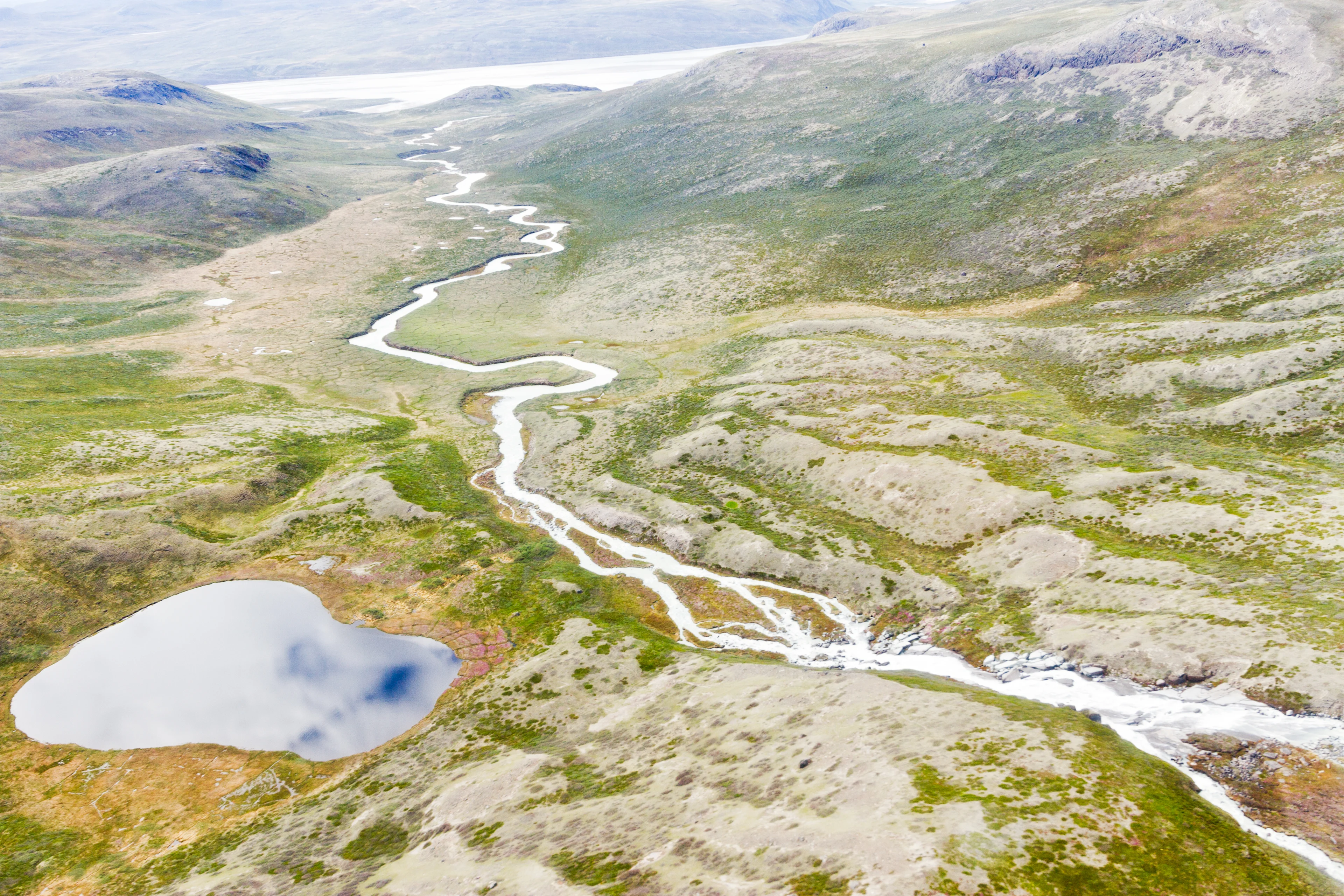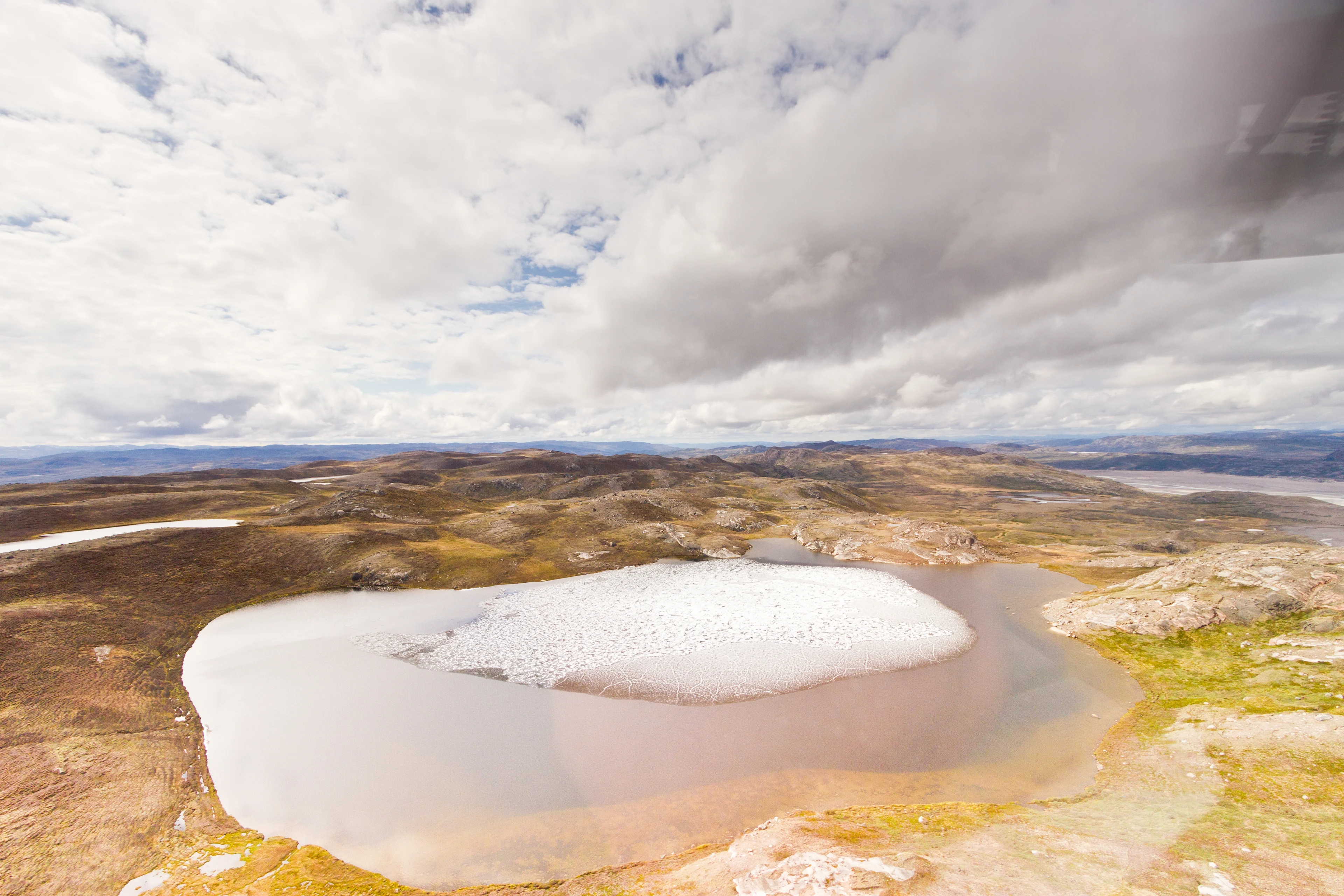
Scientists shocked to discover plants under mile-deep Greenland ice
Well-preserved fossilized plants indicate that the Greenland Ice Sheet has completely melted at least once in the last million years.
Cold War discoveries and climate change don’t always intersect, but when they do, scientists improve their ability to predict how much sea levels will rise as global temperatures warm.
During the late 1950s, the U.S. Army built a nuclear-powered Arctic research centre called Camp Century in northwestern Greenland. This military base became the headquarters for a top-secret mission called Project Iceworm, which appeared as a polar science station but actually hid 600 nuclear missiles under the ice. The mission was eventually cancelled, but a scientific team at Camp Century was able to carry out Arctic research and collect ice samples when it was operating.

Extracting ice cores at Camp Century during the 1960s. Credit: Army Corps of Engineers
A 1,600 metre-long ice core was extracted at the base in 1966 and nearly four metres of soil was found at the bottom. Scientists weren’t able to do much with the ice core, as the technology at the time couldn’t determine how old the soil was, so it was left in a Danish freezer and was forgotten for several decades.
The soil samples were accidentally found in 2017 when the contents of the freezer were being transferred to a different location. Given the samples’ unique history, they were shipped to the United States so they could be studied by an international team gathered at the University of Vermont in 2019.
State-of-the-art technologies, such as atom counting, were used to analyze the soil and scientists were surprised to discover twigs, leaves, and mosses, indicating that an entire ecosystem was once flourishing where the Greenland Ice Sheet now resides, which is over 3,200 metres thick at its highest point.

Credit: Dorothy Peteet, Columbia University
The researchers’ findings were published in a study in the Proceedings of the National Academy of Sciences, which says their discovery reveals the Greenland Ice Sheet has completely melted at least once in the last million years.
The ice sheet melted when carbon dioxide concentrations in the atmosphere were significantly lower than present-day, which the researchers say is an indication that there is the potential for human influence to melt the ice again.

A winding river in Greenland. Credit: Joshua Brown
“Ice sheets typically pulverize and destroy everything in their path, but what we discovered was delicate plant structures — perfectly preserved. They’re fossils, but they look like they died yesterday. It’s a time capsule of what used to live on Greenland that we wouldn’t be able to find anywhere else,” says Andrew Christ, University of Vermont scientist and lead author of the study, in the university’s press release.

A pool of melting ice in Greenland. Credit: Joshua Brown
The researchers say that Greenland’s ice sheet holds enough water to raise global sea levels by six metres, which would flood some of the most populated coastal cities in the world, including Boston, Miami, and London. Several island nations, such as the Marshall Islands and the Maldives, and Kiribati are all less than two metres above sea level and face total submergence by the end of this century if the predicted climate impacts occur.
“This is not a twenty-generation problem,” says Paul Bierman, a geoscientist at the University of Vermont, in the press release. “This is an urgent problem for the next 50 years.”
Thumbnail credit: Joshua Brown







